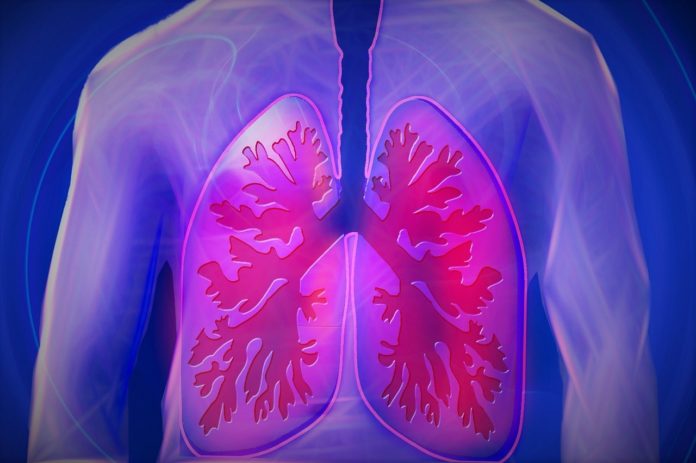
Kidney disease biomarker may also be a marker for chronic lung disease, like COPD or chronic obstructive pulmonary disease
A commonly used biomarker of kidney disease, albuminuria may also indicate lung problems, particularly COPD, according to new research published online in the American Thoracic Society’s American Journal of Respiratory and Critical Care Medicine.
Albuminuria, the amount of the protein albumin in urine, indicates damage to the single layer of cells lining blood vessels, known as the endothelium, in the kidney. Previous studies have shown that this damage is associated with microvascular (small vessel) abnormality throughout the body, including the lungs.
“The pulmonary microvasculature is critical to gas exchange and known to be impaired in patients with COPD, especially those with emphysema,” said lead author Dr. Elizabeth C. Oelsner, Herbert Irving Assistant Professor of Medicine at Columbia University. “We wanted to test whether albuminuria, a non-invasive and commonly used clinical test, could serve as a marker for increased risk of developing chronic lower respiratory diseases, such as COPD and asthma.”
The study found for each standard deviation increase in albuminuria, there was a 15 percent increase in those who developed moderate-to-severe COPD
31,877 participants (average age: 60 years) from six cohort studies were included in this study and they were followed for changes in lung function over a period of 6 years and for hospitalizations for respiratory illness and death over a median period of 15 years. Participants with previous history of COPD or asthma were excluded from the study.
The study found for each standard deviation increase in albuminuria, there was a:
-
15 percent increase in those who developed moderate-to-severe COPD;
-
26 percent increase in COPD hospitalizations and deaths; and
-
3 percent greater decline in FEV1 (the amount of air that can be forcibly exhaled in one second) and an 11 percent greater decline in the ratio between FEV1 and FVC (the total amount of air that can be forcibly exhaled after taking the deepest breath possible). Both FEV1 and FEV1/FVC are important measures of lung function.
The researchers found that the association between albuminuria and COPD remained significant even after taking into account smoking history, diabetes, hypertension and cardiovascular disease. Interestingly, while smoking is known to cause both endothelial damage and COPD, the results were found to be similar in non-smokers.The study however, did not find a significant association between albuminuria and asthma.
“Our study helps to explain why COPD patients often have a constellation of vascular problems, including heart and kidney disease,” Dr. Oelsner said. “This makes it all the more important for clinicians to encourage avoidance of exposures like smoking and treatment of diseases like hypertension and diabetes that cause endothelial dysfunction.”














Thanks for finally talking about >Common kidney disease biomarker
could also be an indicator for chronic respiratory
diseases – Health news, Medibulletin <Liked it!
Very good write-up. I absolutely appreciate this site.
Keep it up!
Comments are closed.